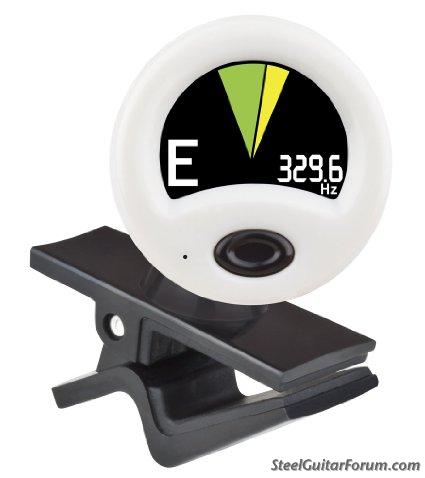I have always used the “old†Jeff Newman just intonation settings with E straight-up at the “440†(zero) mark.
Several years ago, Larry Bell (an excellent player and an engineer) described on the SGF what I believe to be the most logical way to tune one’s pedal steel to accommodate the “cabinet drop†that occurs when the A & B pedals are engaged.
Basically Larry recommends tuning the E9 fourth and eighth strings (the Es) to "440" with the A & B pedals engaged. Then release the A & B pedals, and check your 4th string. Whatever the offset from “440†the E string reads with the pedals disengaged, tune your B string with the same degree of offset.
For example, my guitar has little cabinet drop, so the E (with no pedals engaged) usually shows up at about 1.5 Hz higher than "440" (“441.5â€), so I tune my B strings to “441.5â€.
As Pythagoras discovered 2,500 years ago, the purest musical relationship is between the root tone and the fifth tone.
The result of Larry’s method is that when the A & B pedals are engaged, the E note (the fifth scale-tone in A) is at 440, and when the A & B pedals are disengaged, the E note is in tune with the B note (the fifth scale-tone in E) at 1.5 Hz high (441.5).
Very logical, very simple, and the guitar is in perfect tune.

For a more detailed explanation:
http://www.larrybell.org/id29.htm
- Dave
Edited to correct "cents" to "Hz".
